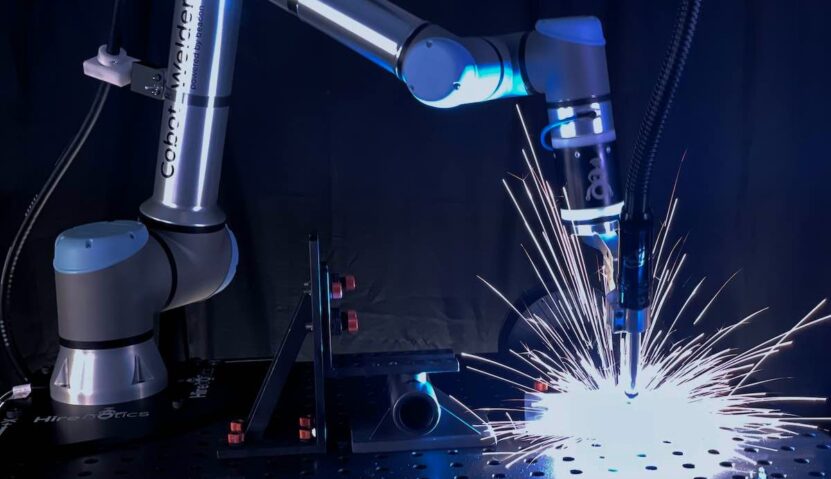The manufacturing industry is evolving at a rapid pace. Advances in automation, robotics, and digital technology are transforming production lines across the globe. Among the most exciting innovations is cobot welding, a solution that combines the precision of robotics with the adaptability of human collaboration.
Unlike traditional industrial robots, collaborative robots—or cobots—are designed to work alongside humans safely. When applied to welding, cobots offer efficiency, accuracy, and flexibility, making them increasingly popular in both small workshops and large-scale factories.
What is Cobot Welding?
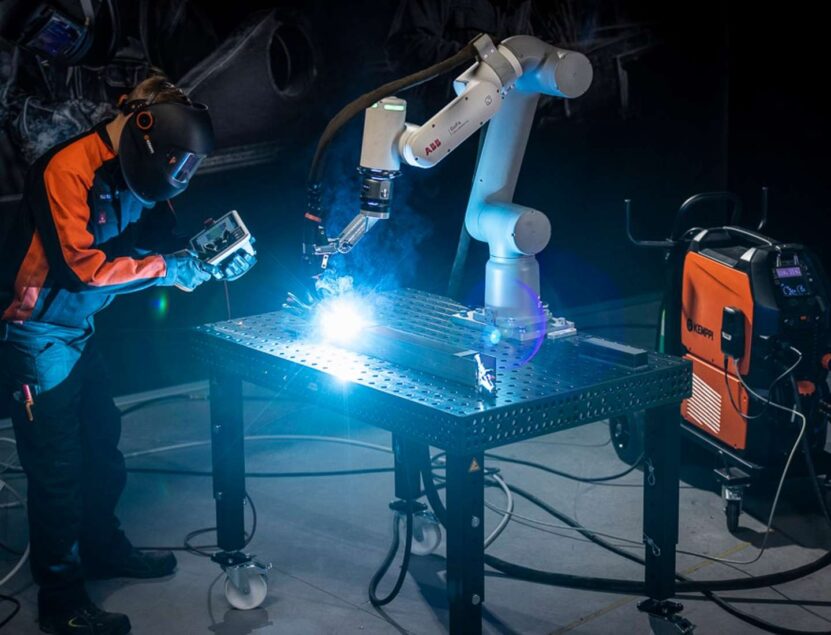
Cobot welding involves the use of collaborative robots equipped with welding tools and software to assist or perform welding tasks. Unlike conventional robotic systems, cobots are lightweight, easy to programme, and built to share workspaces with human operators.
They are designed to handle repetitive, labour-intensive welding tasks, freeing skilled welders to focus on higher-value, complex work. This combination of automation and human expertise helps businesses increase productivity while maintaining quality.
Key Features of Cobot Welding
Safety
Cobots are equipped with sensors and safety systems that allow them to operate near humans without the need for safety cages. If a cobot detects unexpected contact or obstruction, it will slow down or stop to avoid harm.
Flexibility
Cobots can be reprogrammed quickly for different welding tasks. This makes them ideal for businesses with short production runs, varied product lines, or frequently changing requirements.
Ease of Use
Unlike traditional robotic systems that require specialist programming skills, cobots can be programmed by shop-floor staff using simple interfaces or even manual guidance.
Precision
Cobot welding ensures consistent, high-quality welds with minimal errors. This improves product reliability and reduces waste caused by defects.
Cost-Effectiveness
Cobots typically have lower upfront costs and quicker installation compared to traditional robotic systems. Their adaptability also means they deliver a faster return on investment.
The Benefits of Cobot Welding
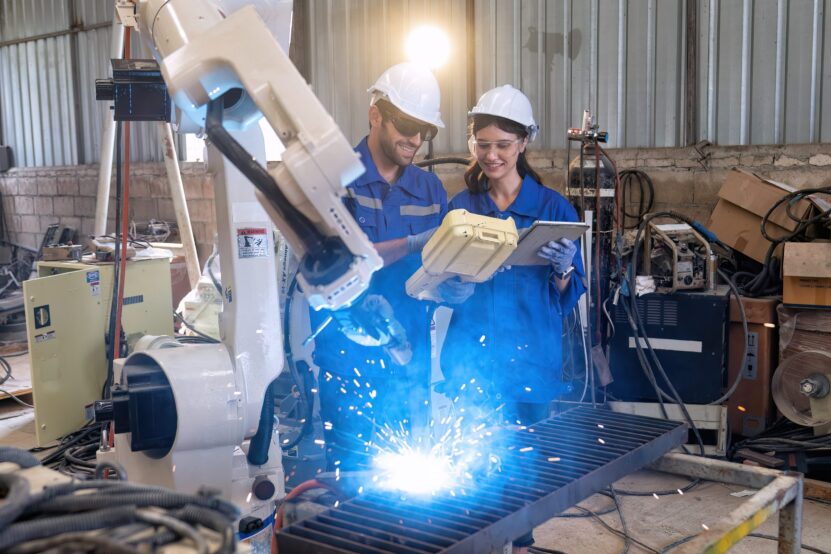
Improved Productivity
By automating repetitive welding tasks, cobots increase output and reduce bottlenecks on production lines. They can operate for long hours without fatigue, ensuring efficiency around the clock.
Enhanced Quality
Cobots perform welds with pinpoint accuracy, eliminating inconsistencies caused by human error or tiredness. This is especially valuable in industries where weld quality directly impacts safety and durability.
Worker Satisfaction
Cobot welding doesn’t replace human welders—it supports them. By taking on strenuous and monotonous tasks, cobots reduce physical strain and allow welders to focus on skilled, rewarding work.
Scalability
Cobots are well suited to businesses of all sizes. From small manufacturers with limited staff to large-scale production facilities, cobot welding can scale to meet demand.
Competitive Advantage
Companies that embrace cobot technology often gain a competitive edge through faster turnaround times, higher quality products, and lower operational costs.
Applications of Cobot Welding
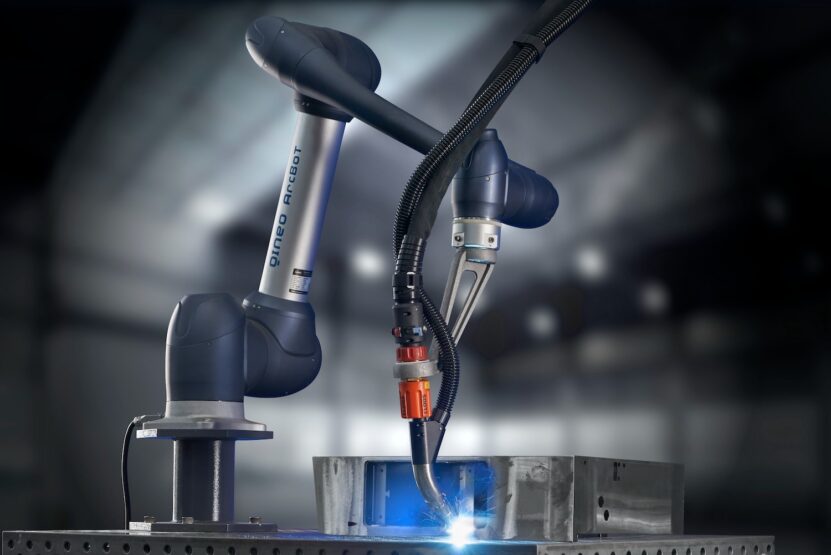
Automotive Industry
Cobot welding is widely used in the automotive sector for components such as chassis, exhaust systems, and brackets. The accuracy of cobots ensures compliance with strict industry standards.
Aerospace and Defence
High-precision welds are essential in aerospace manufacturing. Cobots deliver consistent results while maintaining the safety and quality demanded by the sector.
Metal Fabrication
In fabrication workshops, cobots handle repetitive welds on frames, panels, and structural parts, freeing human welders for more intricate projects.
General Manufacturing
From small metal parts to heavy equipment, cobot welding can adapt to various tasks, making it suitable for a wide range of manufacturing environments.
How Cobot Welding Differs from Traditional Robotic Welding
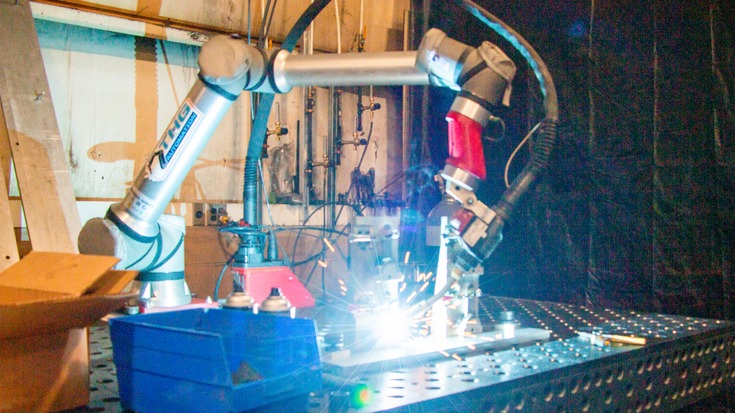
- Setup and Programming – Traditional robots often require engineers to set up complex code, while cobots are designed for quick, user-friendly programming.
- Space Requirements – Traditional robotic welding systems often need dedicated areas with safety barriers. Cobots can work safely alongside humans in shared spaces.
- Flexibility – Cobots can be easily moved between tasks and stations, whereas traditional robots are usually fixed installations.
- Cost – Cobots are generally more affordable for smaller companies, lowering the barrier to entry for automation.
Cobot Welding and Workforce Development
A key concern for many businesses is whether automation replaces jobs. In reality, cobot welding complements the workforce rather than replaces it. Skilled welders remain vital for complex or bespoke tasks, while cobots handle repetitive jobs.
This collaboration boosts productivity, reduces fatigue, and creates opportunities for workers to upskill in areas such as robotics programming, system integration, and quality control.
Challenges and Considerations
Initial Investment
Although cobots are more affordable than traditional robotic systems, there is still an upfront cost. Businesses need to evaluate ROI carefully.
Training
While cobots are user-friendly, staff may still require training to use them effectively and safely.
Task Suitability
Not every welding job is suitable for cobot automation. Highly complex or bespoke welds may still require manual expertise.
The Future of Cobot Welding
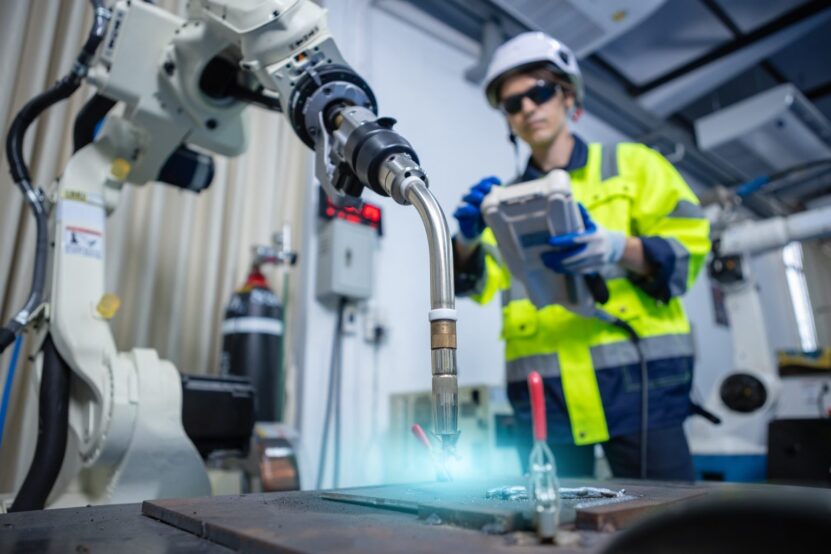
As technology advances, cobot welding is set to become even more accessible and efficient. Developments in artificial intelligence, vision systems, and cloud connectivity will enhance cobots’ ability to adapt and learn.
Future cobots may be able to self-optimise, analyse weld quality in real time, and collaborate more seamlessly with human operators. This makes cobot welding a key driver of Industry 4.0 and the smart factory revolution.
Cyber-Weld: Leaders in Cobot Welding Solutions
For businesses ready to embrace the future of manufacturing, Cyber-Weld provides advanced cobot welding solutions. Their expertise in robotic systems integration ensures that manufacturers can benefit from automation tailored to their specific needs.
Cyber-Weld offers:
- Bespoke cobot welding integration
- Training and support for staff
- Systems designed for flexibility and scalability
- A focus on safety, productivity, and long-term value
By partnering with Cyber-Weld, companies can adopt cutting-edge cobot technology with confidence.
Conclusion
Cobot welding represents a significant step forward for manufacturing industries. By blending automation with human expertise, cobots improve productivity, deliver higher-quality welds, and create safer, more efficient workplaces.
As demand for flexibility, efficiency, and sustainability grows, cobot welding is set to become an essential part of factories and workshops across the UK. By adopting this innovative technology now, businesses not only stay competitive but also prepare themselves for the future of intelligent manufacturing.
With experts like Cyber-Weld providing tailored solutions, the transition to cobot welding has never been more accessible—or more rewarding.

